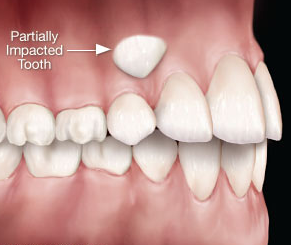Body modifications have become very popular in recent years
with tongue piercings becoming among the most common. While wearers may find
them aesthetically pleasing and trendy, there are in fact many dangers
associated with tongue piercings that you may want to know before deciding if
one is right for you.
1.
Risk of infection – Our mouths are abundant with
all types of bacteria that can cause infections at the piercing site. Additionally
we risk introducing more bacteria into our mouths whenever we handle the
jewelry.
2.
Endocarditis – This potentially fatal condition results
when bacteria enter the bloodstream and causes inflammation of the heart or its
valves in those who already have underlying heart ailments. Bacteria are able to
enter the bloodstream through the wound in the tongue.
3.
Damage to teeth – If your jewelry constantly
knocks against the teeth the end result could be your teeth chipping or
cracking.
4.
Uncomfortable mouth feel – Tongue piercings cause
wearers to produce an excess amount of saliva making it harder to chew and
swallow as well as speak properly.
5.
Prevalence of gum disease – People who have word
tongue piercings for extended periods are at a higher risk for gum disease
since jewelry that comes into contact with the gum line can cause contusions
and receding gums. If left unchecked, receding gums can lead to tooth loss.
6.
Nerve damage – Those who have had their tongues
pierced can experience numbness at the site of the piercing. In some cases, the
piercing site is slow to heal and there is prolonged bleeding.
7.
Swallowing or aspirating jewelry – Jewelry can
become lose in the mouth without the wearer’s knowledge which can lead to it
being swallowed or aspirated – dangerous possibilities that can lead to serious
illness or even death.
If you still decide to get a tongue piercing despite the
dangers be sure to take steps that would lessen your chances of negative
consequences. For example, make sure to ask around for recommendations when searching
for parlors. Also visit the parlor before hand to assess for yourself its
cleanliness and that of its workers. Additionally, ask to see the parlor’s
health certificates. They should be presented on request and up to date.
Following the piercing, be sure to follow all after-care instructions and visit
your doctor if any signs of infection occur such as pus, fever, increased
redness or pain or prolonged bleeding.
There are many dangers associated with tongue piercing and
as a result, it is best to be aware of all the associated risks. If you are
injured because of your tongue piercing, you may need various periodontal
procedures performed such as gum lifts and deep cleanings. Contact one of our
dental health professionals today to find out how they can help you.







